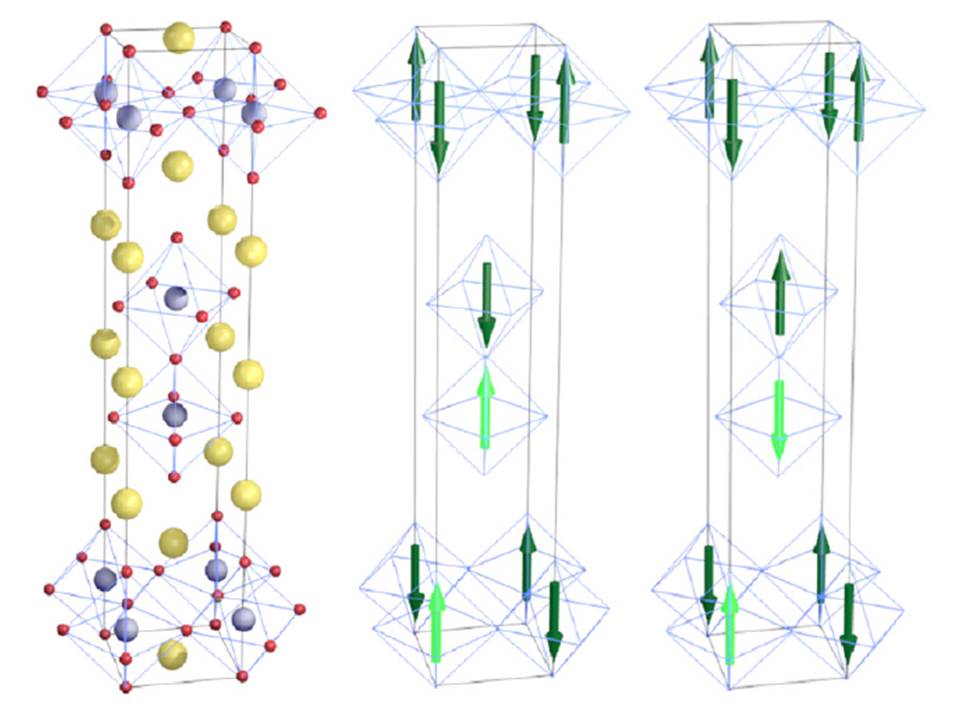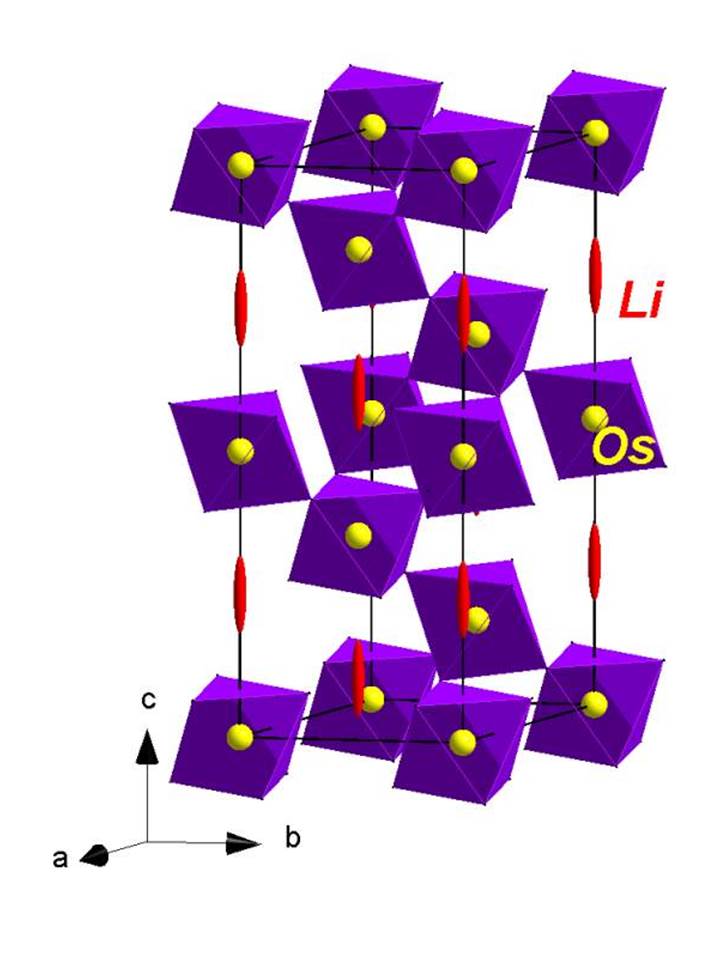
5d oxides and compounds
Oxides and compounds containing 5d transition metal ions, e.g. Ir and Os, exhibit a variety of interesting and unusual properties such as metal–insulator transitions, topological phases and frustrated magnetism. These new states originate from the large relativistic spin–orbit coupling of 5d electrons, which is similar in magnitude to the crystal field and electron correlation energies in the solid state. The spin–orbit coupling induces a substantial orbital moment in the ground state leading to a strong entanglement of spatial and spin coordinates. Our interest is in finding new states of matter and new classes of physical behaviour.
Current projects
This project is a collaboration with Prof. Des McMorrow of the London Centre for Nanotechnology, University College London, and is funded by EPSRC grant EP/N034872/1, New correlated electronic states arising from strong spin-orbit coupling.
This project is a collaboration with Dr Kazunari Yamaura of the National Institute of Materials Science, Tsukuba, Japan.
Prof. Andrew Boothroyd
Clarendon Laboratory
Oxford, OX1 3PU
United Kingdom
phone
+44 (0) 1865 272376
fax
+44 (0) 1865 272400
We have studied the bilayer iridate Sr3Ir2O7, which is an insulator but close to metallic behaviour. Resonant magnetic x-ray scattering and ARPES has been used to investigate the magnetic order and the validity of the Jeff = 1/2 model for the ground state.
For more information, see
The Jeff = 1/2 insulator Sr3Ir2O7 studied by means of angle-resolved photoemission spectroscopy
B. M. Wojek, M. H. Berntsen, S. Boseggia, A. T. Boothroyd, D. Prabhakaran, D. F. McMorrow, H. M. Rønnow, J. Chang, and O. Tjernberg
J. Phys.: Condens. Matter 24 (2012) 415602.
On the magnetic structure of Sr3Ir2O7: an x-ray resonant scattering study
S. Boseggia, R. Springell, H. C. Walker, A. T. Boothroyd, D. Prabhakaran, S. P. Collins, and D. F. McMorrow
J. Phys.: Condens. Matter 24 (2012) 312202.
Antiferromagnetic order and domains in Sr3Ir2O7 probed by x-ray resonant scattering
S. Boseggia, R. Springell, H. C. Walker, A. T. Boothroyd, D. Prabhakaran, D. Wermeille, L. Bouchenoire, S. P. Collins, and D. F. McMorrow
Phys. Rev. B 85 (2012) 184432.
Elastic and inelastic x-ray resonant scattering was used to establish that the magnetically ordered phase in Sm2Ir2O7 has the all-in-all-out magnetic structure, which is a pre-requisite for the predicted Weyl semi-metal state. See Phys. Rev. Lett. 117 (2016) 037201 (arXiv:1604.06401)
Structural and electronic transitions in osmium oxides
We are investigating the physical properties of newly-synthesised osmium oxides. Many of these materials exhibit unusual metal-to-insulator transitions driven by magnetic order.
Recently, we discovered a 5d metal oxide LiOsO3 which exhibits a structural phase transition that is analogous to the phase transition that causes ferroelectricity in the well-known ferroelectrics LiNbO3 and LiTaO3. Ferroelectrics are insulators without exception, but LiOsO3 masquarades as a ferroelectric despite being a metal at all temperature. This is very surprising, because the mechanism that causes structural transitions in metals and ferroelectrics are usally quite different.
For more details of this work see:
A ferroelectric-like structural transition in a metal
Y. Shi, Y. Guo, X. Wang, A.J. Princep, D. Khalyavin, P. Manuel, Y. Michiue, A. Sato, K. Tsuda, S. Yu, M. Arai, Y. Shirako, M. Akaogi, N. Wang, K. Yamaura and A.T. Boothroyd
Nature Materials DOI: 10.1038/nmat3754.
Facilities and Equipment in the Group
Typically, 5d oxides are prepared by solid-state reaction, and crystals can be grown from a flux. We have an argon glove box and a variety of box and tube furnaces for powder and crystal preparation. Some phases are best stabilised at high pressure. For high pressure synthesis we collaborate with Dr K. Yamaura from the National Institute of Materials Science, Tsukuba, Japan.

Crystal and antiferromagnetic domains in Sr3Ir2O7

Crystal structure of LiOsO3